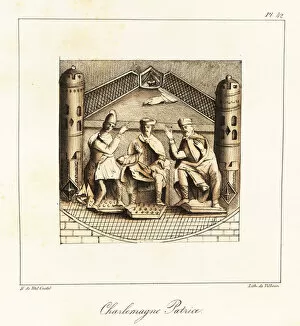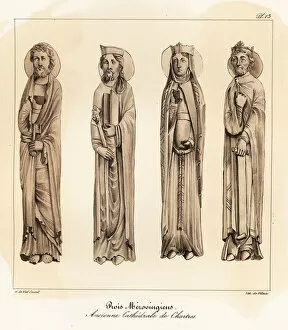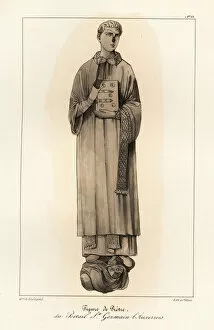Weapons And Furniture Collection (#4)
In the tumultuous era of warriors and farmers in the 12th century, weapons and furniture played contrasting roles
For sale as Licensed Images
Choose your image, Select your licence and Download the media
In the tumultuous era of warriors and farmers in the 12th century, weapons and furniture played contrasting roles. While weapons were essential for survival on the battlefield, furniture served as a symbol of status and comfort in everyday life. A funeral scene from the 9th century depicts four men solemnly carrying a dead body on a bier. This poignant image reminds us of the fragility of life during that time period. The Frankish funeral rites observed in the 10th century further emphasize the importance placed on honoring and remembering the departed. Another engraving showcases two mourners praying over a deceased person while a priest presides over them. This depiction highlights both religious customs and communal mourning practices prevalent in medieval society. As battles raged across kingdoms, medieval soldiers clad in long tunics mounted their horses with weapons at hand. These brave warriors relied on their weaponry to defend their lands and assert dominance amidst political turmoil. In stark contrast to these scenes of war, we glimpse into moments of leisure through depictions such as that of a nobleman reclining luxuriously on a Byzantine bed from the 9th century illuminated manuscript. Such opulent furnishings showcased wealth and refinement among nobility during this period. The bas-relief from Hincmar's tomb reveals an influential figure who advised Charles the Bald, Carolingian Emperor during his reign from 823-877. It serves as evidence not only of Hincmar's esteemed position but also reflects upon his taste for ornate furniture befitting his stature. One cannot overlook intricately carved chairs adorned with tassels or scriptoriums housing precious inkstands dating back to the 10th century - testaments to craftsmanship intertwined with functionality within households or monastic settings alike. Artistic representations also shed light on cultural aspects beyond warfare or social hierarchy; King David depicted chanting psalms while playing his harp signifies music's significance even amidst turbulent times.






